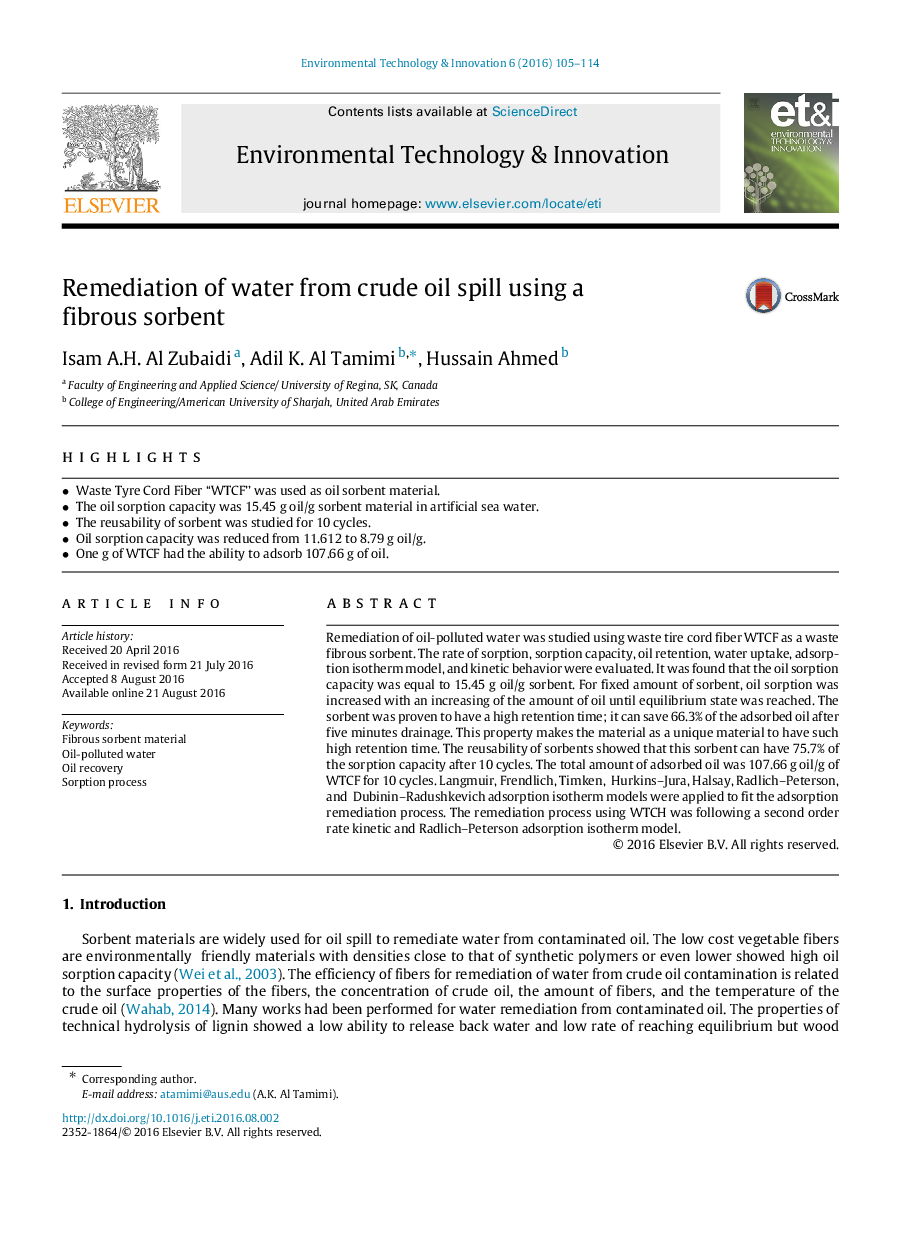| Article ID | Journal | Published Year | Pages | File Type |
|---|---|---|---|---|
| 4428165 | Environmental Technology & Innovation | 2016 | 10 Pages |
•Waste Tyre Cord Fiber “WTCF” was used as oil sorbent material.•The oil sorption capacity was 15.45 g oil/g sorbent material in artificial sea water.•The reusability of sorbent was studied for 10 cycles.•Oil sorption capacity was reduced from 11.612 to 8.79 g oil/g.•One g of WTCF had the ability to adsorb 107.66 g of oil.
Remediation of oil-polluted water was studied using waste tire cord fiber WTCF as a waste fibrous sorbent. The rate of sorption, sorption capacity, oil retention, water uptake, adsorption isotherm model, and kinetic behavior were evaluated. It was found that the oil sorption capacity was equal to 15.45 g oil/g sorbent. For fixed amount of sorbent, oil sorption was increased with an increasing of the amount of oil until equilibrium state was reached. The sorbent was proven to have a high retention time; it can save 66.3% of the adsorbed oil after five minutes drainage. This property makes the material as a unique material to have such high retention time. The reusability of sorbents showed that this sorbent can have 75.7% of the sorption capacity after 10 cycles. The total amount of adsorbed oil was 107.66 g oil/g of WTCF for 10 cycles. Langmuir, Frendlich, Timken, Hurkins–Jura, Halsay, Radlich–Peterson, and Dubinin–Radushkevich adsorption isotherm models were applied to fit the adsorption remediation process. The remediation process using WTCH was following a second order rate kinetic and Radlich–Peterson adsorption isotherm model.
